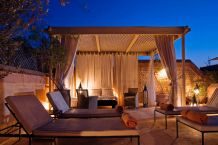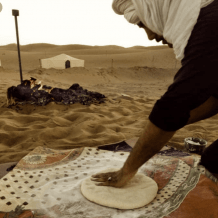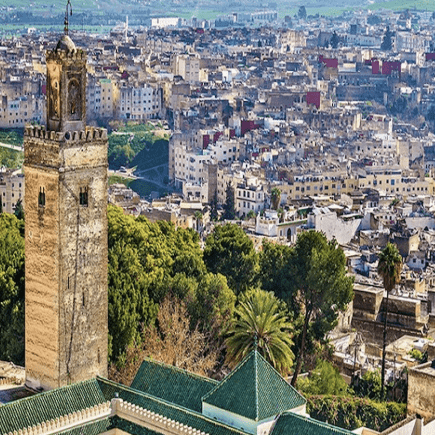
What are the Top 10 Things to Do in Fes with Kids?
Traveling with kids to Morocco can be an extraordinary educational opportunity to open children up to a new world of discoveries and serve as a wonderful family adventure. One of the most exciting places for a family to explore in Morocco is the Fes medina. Located in Northeastern Morocco, Fes is the oldest medieval city comprised of a labyrinth of over 9,000 narrow alleys. Each alley is part of a formula of mazes that make up hidden jewels of an ancient living city and people. Fes is divided into two sections, Fes-el-Bali and Fes El Jdid.
The city streets of Fes are crowded with small shops, olive and spice souks, Islamic schools to historic mosques along with wood-burning bread ovens and magnificent zellige tiled fountains.
Fes Family Activities include leather book binding, calligraphy design, visiting artisans, a Fes Food Tasting Tour or a cooking class with a family.
Families visiting Fes, Morocco for a vacation can anticipate engaging in a wide variety of cultural activities. Family experiences in Fes offered are exploring a historic tannery, connecting with designers at a weavers cooperative, taking a Fes Food Tour or participating in a home cooking class. Learning out to make your own drum, leather embossing and bookbinding are also craft making options offered by Craft Draft in Fes.
The Fes medina is a cornucopia of sites and sounds. The smell of fragrant rose and argan nut oil permeate the city streets, pyramids of spices laid alongside shop keepers stalls, donkeys that transport everything from computers to food, and children roaming the alleys at play are participating in a game of soccer or chess.
The Moroccan kingdom announced that part of the King’s “Medina of Fes 2018-2023″ is to renovate and raise global awareness for the UNESCO World Heritage Fes Medina. Facilities are getting an update, new shops are emerging, and better signage is being employed. The monarchy also plans to build a new Jewish museum in Fes.
Historically, Fes was home to many Jewish communities and although it’s Jewish population declined since 1948 when Israel became a state, many Jewish sites inclusive of synagogues, cemeteries, museums, and cultural centers exist. Dating back to the 12th century when the Almohads brought the Moroccan Berber Muslim movement to Fes, Jewish families continued to stay true to their heritage. The only documented family of Jewish origin to convert to Islam was I, Kohen, however, they bravely kept the roots of their Jewish name (Benchekroun of Jewish origin Chakroun).
The Fes medina is an ecosystem that brings together culture, history, and education. Fes also houses the world’s oldest university, Université Al Quaraouiyine and has mosques on every corner, delicious foods to try, and unique workshops and events to partake in.
Families traveling with children to Fes will encounter an enriching, old-world cultural experience that is certain to transform and enlighten.
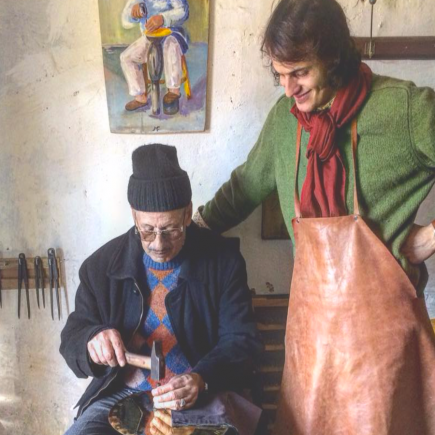
Top 10 Things to Do in Fes With Kids
1. Craft Workshops in Fes
Since 1969, the Dar Attamania Family Business, Craft Draft, has become the name to seek out for artisan workshops perfect for the entire family. Craft Draft specializes in traditional copper etching, brass design, leather embossing, and bookbinding. The family business has extended its services to educating the public about these artistic traditions with the goal to preserve historical crafts like copper etching. Families visiting Fes can participate in workshops led in English by founder, Hamza El Fasiki and on occasion his father. Guests are invited to use the family’s tools and guided towards creating a chosen craft. The artisanal workshops offer students the option of participating in a bookbinding workshop to create a long stitched manila paper journal; to learn about the geometric designs found in Islamic art; and a leather embossing class that involves a chisel and stamping the final piece, Calligraphy classes are also an option.
The workshops take up to four hours and are a pleasurable way to spend an afternoon learning, being creative, and engaging with local Moroccan people.
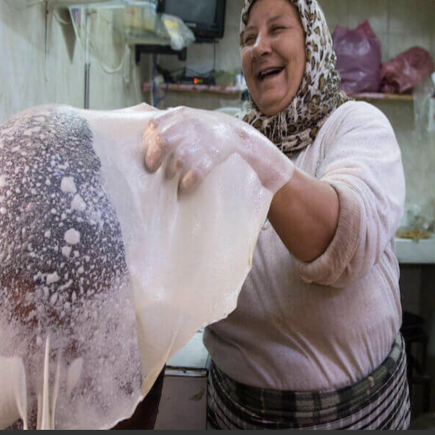
2. Fes Food Tour
Fes is the capital of Moroccan cuisine. Chefs and foodies recognize the ancient city for its gastronomical secrets and old-world cooking techniques. A Fes food tour is the perfect opportunity for families with kids to engage in a guided cuisine experience in the historic backstreets. Highly anticipated street food items to sample across the three souks, include the spicy sardines, milawi, spicy potato cakes, briwats, soups, olives, and dried meats. Food enthusiasts visit Fes to stock up on exotic spices and other unique condiments. A Fes food tasting tour also serves as an ideal way to learn about which venders offer the highest quality and usage in Moroccan cuisine. Another fascinating vendor on a Fes Food Tour is the honey stall. Moroccan honey is made with a variety of fresh herbs such as lavender, orange flower, rosemary, carob, eucalyptus, and juniper berry. Each honey preserved is different in strength, texture, and color. These traditions and others like baking fresh bread in 400-year-old communal ovens (furans) are an important part of Moroccan culture and will be introduced on a food tour of the Fes medina.
3. Cafe Clock
Cafe Clock is a cultural hub in Fes el Bali. It offers people of all ages and nationalities an atmosphere that extends beyond the common cafe. Cafe Clock offers an exciting menu with a mix of healthy and high-quality Moroccan fare, weekly workshops and programs attract visitors from around the world. Among the menu favorites are the camel burger and fries; for every camel burger sold, Cafe Clock contributes 10 MAD ($1 USD) to a Moroccan charity of their choice. Giving back to the community is at the heart of the restaurant. On several nights of the week, live events take place ranging from the ancient art of storytelling, to live Andalusian music, and film screenings. Cafe Clock also offers workshops such as how to learn the oud, calligraphy lessons, Moroccan Culture 101, and the art of cooking Moroccan cuisine along with patisserie classes.
Cafe Clock was founded in 2006 by British entrepreneur and foodie Mike Richardson. It is named after the centuries-old water clock that faces the Bou Inania Madrasa and is located near the famous Blue Gate in Fes. There are two other Cafe Clock concept restaurants in the Marrakech and ChefChaouen medinas.
4. Donkey Ride in the Medina
Donkeys are one of Morocco’s most coveted animals by villagers and city dwellers who require transport of various types of goods. They can be seen in the ancient Fes Medina carrying up to five televisions on their back and are the primary source of transport for the urban car-free ancient city of Fes-el-Bali. In addition to carrying food supplies, luggage, furniture, garbage, and other merchandise, donkeys must also act as ambulances. In the narrow Fes medina, even motorbikes and bicycles have a difficult time getting through the maze-like narrow alleys. According to a 2009 article in Smithsonian magazine, 100,000 Fassi people rely on the donkey. The donkeys are honored each year at the annual Beni Ammar Festival of Zarhoun. This past July 2019, the festival theme celebrated the donkey for its loyalty and helpfulness in Moroccan daily life. The festival’s highlight is a donkey beauty pageant; this year Donkey Cleopatra won. Travelers with children who visit Fes and would like to experience the medina on donkey-back can arrange to do so through a private guide.
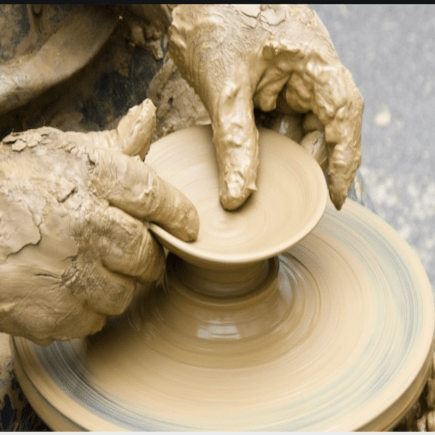
5. Art D’Argile and Pottery and Ceramics Making
Families interested in ceramics may wish to consider a pit stop at Art Argile. The facility is a workplace for skilled and talented artisans who produce high-quality ceramic work. Your pottery tour guide will take you on a guided tour of the workshop to witness the elemental steps of making this highly coveted Moroccan zellij tiled tables, zellij covered fountains, small everyday home items, and pottery. Although there is no pressure to purchase anything, watching the ceramic making process is inspiring. You will even see the process of clay creations fired in a kiln. For those interested in taking something home, the showroom is a trustworthy place to shop.
Beyond the tour, it is possible to learn the ancient pottery or zellij tile technique by participating in a private workshop. Zellij tiles are elegant, colorful, and are laced with Moroccan history. The zellij first appeared in the 10th century with basic earth-toned colors however by the 17th century, vibrant shades of emerald green, bright yellow, and cobalt blue were introduced. Zellij art is considered one of the highest forms of artistic expression in Moroccan culture. The tiles contain many geometrical patterns that convey science and mysticism through their mathematical motifs. Recently, clothing and interior designers from around the world began traveling to Morocco, in particular, the city of Marrakech for creative inspiration. In Spring 2019, actress and model Chrissy Teigen launched a Moroccan home goods collection with the retailer Target which features zellige patterns. Learning the historical and ancient techniques from the Fassi masters is a unique opportunity to go deeper into the layers of ancient Moroccan culture. It may even inspire the designer or artist in you.
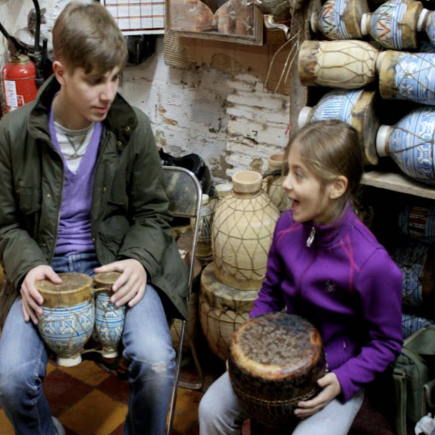
6. Make Your Own Drum
A drum workshop is a unique activity for the entire family that can be enjoyed in the historic Fes medina. Families searching for an immersive Moroccan experience that involves learning how to make a drum from start to finish can participate in a half or full-day class. Drum making classes are exclusively held inside a Foundouk, a historic inn or warehouse that once played a role in housing caravan travelers during the Trans Saharan trade routes.
A specialist drum-maker will help you to choose an unfinished earthenware tom tom drum and then take you to the leatherworker to choose your hide, whether it be camel, goat or fish. You can decide by testing out some finished drums for the varying sounds they make. You are then taught by the artisanal expert how to work the hide onto the drum by yourself and the skill of different stringing techniques to secure it tightly to create the drum’s tones. The workshop is finished off by a drumming session with a professional local drummer. Your entire family can create Moroccan rhythms and the beats of ancient times on your very own instrument. Music is an important part of Moroccan life and the class will enable families to appreciate the street musicians and Gnawa artists throughout Fes.
Among Morocco’s medinas, Fes el Bali is most famous for its leather tanneries and to complement your class a visit to the Chouara Tannery is highly recommended. It is the largest of Fes’ three tanneries.
7. Jnan Sbil Gardens
The 18th-century park was built by Sultan Moulay Abdellah and is Fes’ oldest public park. The gardens are sometimes referred to as the “Oasis of the Medina” because they are idyllic for stretching your legs, letting kids run around, and escaping the busy city noise. The meticulously manicured Jnan Sbil gardens were inspired by those of Andalusia and cover an area of 8 hectares. They contain 1000 unique species of plants and cacti, a pond, and a large grassy area covered with flowers and tall trees. The park’s design is complemented by seven grand iron doors, zellij-tiled water gardens, fountains and basins, and many quiet corners to sit and rest. The central part of Jnan Sbil showcase many elements of Islamic geometrical design. The historical garden is alluring and its spaces are filled with history. Jnan Sbil has inspired poets and researchers around the world to include the gardens in their poems and masterpiece work. The site is also home to the Fes of Sacred World Music which takes place in Fes in June each year. During the rest of the year, the gardens are popular with locals who come to picnic, meet friends, and exercise. Jnan Sbil Gardens is located in Fes el Jdid, the new part of the medina, just footsteps from the Jewish Mellah, and quarter.
8. Unveiling Beauty Secrets, Henna Party
Many travelers anticipate that receiving henna body art is on their bucket list of top things to do in Morocco. The temporary tattoo is part of a Berber tradition that dates back to the 7th millennium BC. From this period, Moroccan women began using the Meditterean plant to adorn their bodies, cover their hair, and even improve the condition of their skin. Some women even rub henna onto their bodies at the end of a hammam treatment. The intention is to make their skin glow. Henna is also associated with festivals. The three most common places to see beautiful henna geometrical or flower art designs are at Moroccan weddings, circumcisions, and Eid Al Adha, the Festival of Sacrifice marking the end of Ramadan.
An organized henna party for the entire family combined with unvailing hidden beauty secrets is available in Fes. Participate in a 5-hour workshop that unearths traditional methods and natural beauty products that can easily be made in your own home by yourself or with family and friends.
Start your day by shopping at the souk el henna to purchase ingredients and gain an overall explanation of the products that can be made from each one. Then take a workshop, in a Moroccan Dar.Sip Moroccan tea as you learn how to make and blend your own rhassoul, test Argan oil, sabun bildi and eau de fleur with step by step instructions to understand the properties of the ingredients, how and why they are used and the benefits they each provide.
Henna designs can be painted on any part of the body, however, the wrists, ankles, fingers, and hands are the most common locations. The Berbers believe that henna wearers are protected against the evil eye and that it brings baraka (good luck). Henna takes about twenty minutes to an hour to apply and lasts for a few weeks. Upon completion, lime juice and sugar will be squeezed over the paste. The final look of henna is usually reddish-brown.
9. Playground at Borj Nord in Fes
The perfect opportunity to introduce children to a 16th century Morocco while they have fun exploring. The ancient site contains a Bastille castle modeled after the Portuguese Forts. It was built in 1582 by the Saadi dynasty and in its heyday was one of the most important weapons factories in the world. Today it houses a museum containing cannons, swords, rifles, and other ancient weapons. Outside the museum, a large open area is surrounded with 360-degree panoramic views of the ancient Fes Medina. The play site is ideal after a long day in busy Fes and is a good choice to do a leisurely family hike. A fifteen-minute walk away from Borj Nord you can also discover the Marinid Tombs. This date back to the 14th century Marinid Dynasty. The Marinids conquered Fez in 1250 and turned it into their capital. They also built the newer edition to the medina, Fes el Jdid.
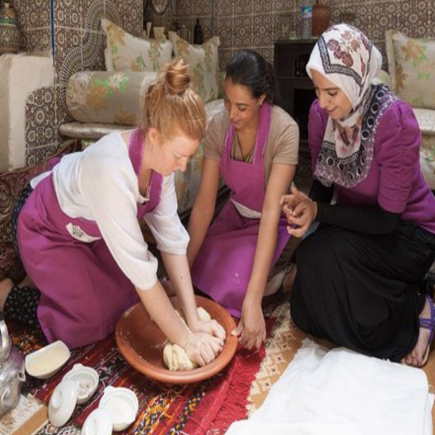
10. Go Local, Cooking class
A great activity for the whole family to interact with locals and experience a truly unique day hosted by a Moroccan family. The cooking class begins with a guided shopping experience of a local souk. You will be introduced to the famous Fassi spice stalls and smell Moroccan spices like Ginger, black pepper, white pepper, cumin, ras el hanout, saffron, turmeric, nutmeg, cinnamon, coriander, thyme, and oregano. The produce, fish, beef, and bird stalls will also be visited to give insight into how traditional Moroccan dishes like couscous, tagine, and salads are prepared. The main part of the lesson will take place in the real-life home of a Moroccan family. Together, you will learn to bake bread in the local Farran, pickle lemons, make a seasonal Moroccan salad, cook a tagine, and prepare Moroccan tea the classic way. When all the instructions, preparation, food training, and presentation is finished, the class ends in a sit-down meal. Traditionally, Moroccans share their meal from the same plate. The experience will upgrade both your culinary skills and cultural awareness.



